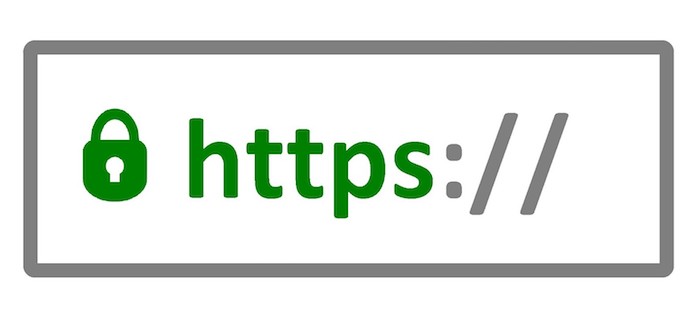What Is a URL?
![]() We all use URLs every day, but far too few of us actually know what URLs are, how they work, and what they really mean when you type them into your browser's address bar.
We all use URLs every day, but far too few of us actually know what URLs are, how they work, and what they really mean when you type them into your browser's address bar.
This guide will break down everything you need to know about URLs and emphasize the importance they play in SEO for your own blogging site or online business.
What Does URL Stand For?
URL stands for "uniform resource locator". As you probably already know, the URL of a website is the text you see in your Internet browser when you visit a webpage or the text you type into that address bar for navigation.
In most cases, URLs begin with letter and symbol combinations such as http://, https://, and so on, followed immediately by www. and the website's "actual" name.
What Does a URL Do?
 In basic terms, the URL is the digital address for the web page (the resource mentioned in the acronym) that your browser is attempting to locate.
In basic terms, the URL is the digital address for the web page (the resource mentioned in the acronym) that your browser is attempting to locate.
This is why many people call URLs web addresses – think of them as digital analogs to home addresses, including a country, state, street, and so on.
Though URLs are ubiquitous for online navigation, most people don't think of these as anything more than simple address bars.
But they're actually much more important than you might think and the exact spelling or organization of their parts can affect their function and more.
SEO URL Importance
For example, URLs' structure and content can affect a business's SEO efficacy. A website's URL is just one piece of information that SEO algorithms will attempt to take when ranking webpages and pieces of content.
In general, the better organized and descriptive your URL pages and content are, the easier Google will be able to rank and organize your pages, leading to a better overall SEO ranking.
In a more practical sense, your URL can affect how easy it is for visitors to find your site, how memorable your site's address is, and more.
The Parts of a URL
URLs are made up of three major parts. Let's break them down one by one now.
Protocol
 The protocol for your URL is the very beginning – it's the part with codes like http:// or https://.
The protocol for your URL is the very beginning – it's the part with codes like http:// or https://.
This is at the beginning of most URL web addresses and it's much more important than you might initially believe.
In a nutshell, the protocol for a URL tells your browser how it should communicate with that site's server. It essentially sets a communication language for both your browser and the host server, helping both machines transfer information quickly and efficiently.
In most cases, modern URLs use the protocols for hypertext transfer protocol or http, hence the code you see at the front of the majority of URL addresses. Hypertext transfer protocol secure, or https, is also becoming more common, as it's a more secure version of the traditional hypertext language, allowing browsers and servers to encrypt data sent back and forth.
Many people are adopting SSL certification to add the "s" at the end of all their URL codes. This tells their visitors that their information is more secure and can even protect your site from hackers to a limited extent.
Domain Name
 The second part of any URL address is the domain name. This is the main, memorable part of a URL code.
The second part of any URL address is the domain name. This is the main, memorable part of a URL code.
It's the identifiable part of any URL address. For example, http://outlook.com's domain name is outlook.com.
Note that a domain name is actually made up of two smaller parts rather than just one. First is the actual name of the site – in the above example, it's outlook.
This is also called the top-level domain or TLD. Then comes the designator, which comes after the TLD and tells the server and computer what type of website a place is.
Examples include .com, .net, .org, and more. While using quality website builders to create a website, the owners must register their domain names carefully, both so it can be recognizable and memorable and so that it accurately describes the site and the content within.
If you are having issues coming up with the one that suits you the most, try using domain name generators to help you with this issue.
For example, the designator can carry significant weight. Sites with a .org designator are usually educational resources, whereas .gov websites must be maintained by government agencies.
Path
The last part of a URL is the "path". This is everything that comes after the designator for a site's domain name. It tells your computer where exactly to look on a website for specific content or pages. In other words, the path directs your browser to a certain place on a website or server.
In many cases, paths are automatically set when new webpages or content are created. But website owners can customize or fine-tune the paths for their URLs for greater SEO and to help Google rank their pages more highly.
Related Read: Best Free Hosting
How Does a URL Work?
![]() Now that you see all the pieces of URLs, let's break down exactly how they work.
Now that you see all the pieces of URLs, let's break down exactly how they work.
In its rawest form, your web browser locates webpages using the IP address, or Internet protocol address.
If you've done any troubleshooting with your computer in the past, you've likely already seen what an IP address looks like; it's just a collection of numbers with dots interspersed between them, such as 81.293.299.02.
Naturally, these numbers are difficult to remember and it would be almost impossible for people to locate their chosen content or websites if they had to navigate to them using those number strings.
URLs serve the same function but are much easier to remember. When you type a URL for a website into your browser's address bar, the web browser utilizes a DNS protocol. This allows it to translate the URL into a corresponding IP address.
Then your browser locates the website instantly – as a computer, it has no difficulty knowing what different strings of numbers mean!
Summary
As you can see, understanding what a URL is and how it works is crucial if you want to make excellent URLs for your own websites and the pages contained within. Be sure to keep how URLs affect SEO as you come up with domain names and URL paths.
Your site will rank higher and your visitors will remember your site more easily as a result.

